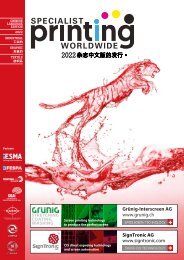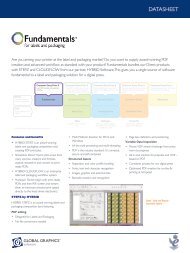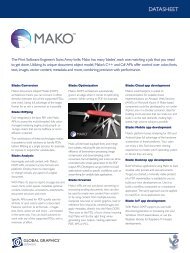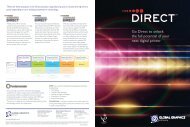Harlequin® Brochure
The Harlequin Host Renderer is a Raster Image Processor, or RIP. A RIP is a tool for converting a page description language such as PostScript or PDF into a format that a printing device such as an inkjet printhead, toner marking engine or laser platesetter can understand. The format that it outputs may be a raster file format such as TIFF, or it may be a stream of raster data that is delivered more or less directly to the printing device. The exact format delivered may be tuned for each integration.
The Harlequin Host Renderer is a Raster Image Processor, or RIP. A RIP is a tool for converting a page description language such as PostScript or PDF into a format that a printing device such as an inkjet printhead, toner marking engine or laser platesetter can understand. The format that it outputs may be a raster file format such as TIFF, or it may be a stream of raster data that is delivered more or less directly to the printing device. The exact format delivered may be tuned for each integration.
Create successful ePaper yourself
Turn your PDF publications into a flip-book with our unique Google optimized e-Paper software.
…PUBLICATION AND BOOKS, TO LABELS AND PACKAGING,…<br />
VARIABLE DATA PRINTING (VDP)<br />
One situation where processing speed is especially<br />
important is when variable data print jobs are processed. If<br />
every page is different, then every page must be processed<br />
individually, and at engine speed.<br />
The Harlequin VariData (HVD) feature intelligently<br />
identifies graphics that are used multiple times. It is not<br />
limited to only selecting Forms or Images in PDF files, and<br />
will amend the order of graphics on the page to maximize<br />
efficiency if it can do so without affecting the visual<br />
appearance of the page.<br />
Both increase its effectiveness, especially with variable data<br />
jobs that have not been constructed by an expert.<br />
HVD may be configured to deliver partial page raster<br />
caches for post-RIP re-composition or all processing can be<br />
performed completely within Harlequin.<br />
Compliant with the ISO PDF/VT specification<br />
Harlequin was first used in a PDF/VT compliant solution in<br />
2010 and our CTO has been the primary UK expert on the<br />
ISO committees that maintain the PDF, PDF/X and PDF/VT<br />
standards and is project editor<br />
for the forthcoming PDF/VT-3<br />
AUTOMATIC TILING<br />
Harlequin v13 adds automatic tiling of large pages, enabling<br />
the RIP to handle huge output without requiring huge<br />
amounts of RAM, and to maximize throughput for very large<br />
output. It is valuable in a variety of ways, most obviously in<br />
décor, textiles and corrugated packaging, but also in other<br />
sectors where larger PDF pages can increase efficiency, by:<br />
• Splitting very large single pages across multiple RIPs for<br />
speed and improved load balancing<br />
• Minimizing RAM requirements (and therefore costs) for<br />
a DFE processing very large pages<br />
• Continuous streaming of rasters from huge pages to the<br />
printer without waiting for the whole page first<br />
• Processing very large pages where post-RIP components<br />
cannot handle rasters above a certain size<br />
The automatic tiling can be used for jobs submitted as PDF<br />
and in image formats such as TIFF and JPEG.<br />
Corrugated cartons imposed onto a 72x98” (1.8x2.5m) sheet. Rendered to<br />
uncompressed 8-bit contone in CMYK at 1200dpi the raster for this would<br />
be over 40GB. Splitting into tiles allows processing to be done in parallel for<br />
higher throughput and minimizes peak memory usage for each tile.<br />
Harlequin is fully compatible with<br />
PDF/VT (ISO 16612-2:2010),<br />
making use of the ‘hints’ in that<br />
standard to increase processing<br />
speed.











